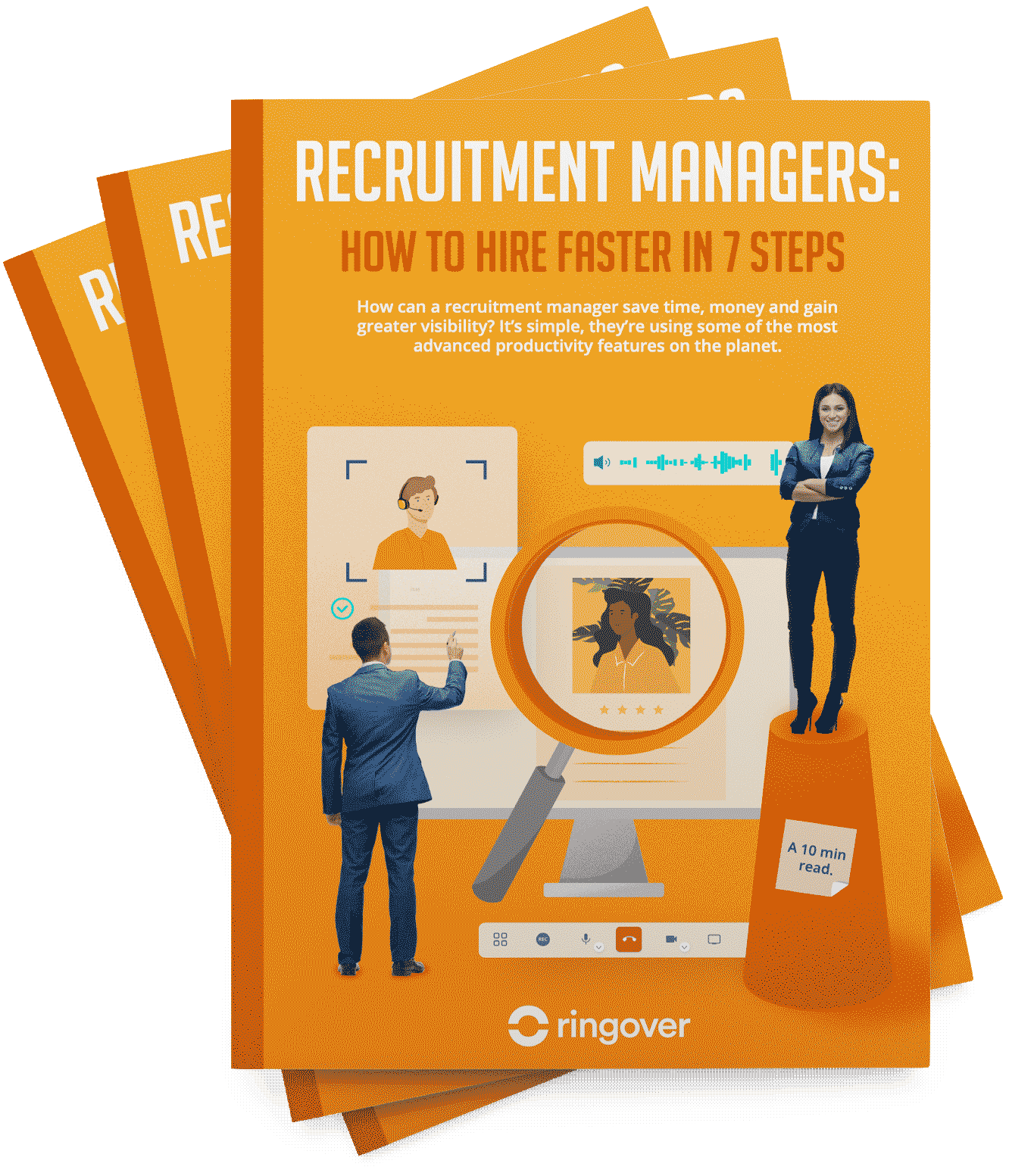Summary
To thrive and achieve their strategic objectives, companies must be able to rely on their talents. Finding, attracting, hiring, and retaining these talents is, in a way, the key to success.
A well-thought-out recruitment strategy with a long-term vision sets you on this path. But how do you develop such a strategy?
Table: 6 steps of a good recruitment strategy
| Recruitment Strategy Step | Description |
|---|---|
| 1. Gather your resources | Determine the recruiting needs depending on the company objectives and structure the recruitment team |
| 2. Audit existing skills | Evaluate the team skills and identify any missing competencies |
| 3. Define selection criteria | Establish a criteria for what type of talent would fit company objectives and culture |
| 4. Establish the employee and brand value proposition | Develop a strong employer brand, thereby creating an attractive value proposition that draws in the best talents |
| 5. Set the recruitment budget | Identify which expenses are needed to support recruitment |
| 6. Gather the necessary recruitment tools | Identify and acquire the appropriate tools for each step of the recruitment process |
What is a recruitment strategy?
Concretely, a recruitment strategy is the plan that outlines how a company attracts, hires, integrates, and retains talents. It must be in total alignment with the company's objectives and take into account its short, medium, and long-term needs. To develop a good strategy, the company must also include:
- Skills mapping to identify the ones it lacks
- Employee value proposition (what you bring to your employees in exchange for their work, beyond compensation)
- Resource planning
- Selection criteria
- Recruitment budget
The strategy must be clear and understood by all those responsible for its implementation. Adjustments can be made along the way by modifying tactics, but the strategy must remain intelligible and coherent.
How to develop your recruitment strategy?
By including the elements mentioned above (skills audit, resource planning, work on employee value proposition and employer brand, etc.), you will have a clear vision and be able to implement actions that will help you effectively sell your company to potential candidates. Here are some tips for establishing your recruitment strategy.
1. Resource planning
Do you want to achieve your profitability and profitability goals? Have you signed a new contract or are you venturing into another market? The reasons for recruiting are numerous but similar. Indeed, you necessarily need the right talents and skills to achieve the goals induced by these changes.
It is essential to determine the services and teams that will need to be strengthened to put your company on the path to success. The same goes for your recruitment team. Also, ask yourself questions such as:
- Do managers manage to get the most out of their team?
- Do employees have the necessary tools and training to excel?
- What about development opportunities for employees?
- Are the teams structured in the right way in light of the expected objectives?
2. Conduct a skills audit
There you go! You have listed your resource needs? Now is the time to conduct a skills audit. You will need to determine the necessary skills, technical or non-technical, that are lacking in your organization.
Thus, if you are about to conquer a new market and your employees are unfamiliar with this market, this information will influence your strategy.
3. Define your selection criteria
In addition to human resources and missing skills, you will need to establish the criteria based on which you will choose the talents that you consider compatible with your objectives and your organization's culture. Here are some examples of criteria:
- Candidate motivation and commitment
- Potential
- Personality
- Professional experience
- Training and qualifications
- Technical and non-technical skills
- Level of self-confidence
- Availability
- Adaptability
- Organizational capacity
- Salary expectations
- Proximity to home
4. Employee value proposition and employer brand
Your company's reputation, especially in the eyes of potential candidates, largely relies on your employer brand. A strong employer brand is essential for an effective recruitment strategy.
If you aspire to develop your company, it is essential to attract the best talents to carry out this evolution successfully.
In addition to building a strong employer brand, it is essential to promote a rewarding employee experience. How? By revealing the multiple benefits and values that your company offers. A convincing value proposition can translate into:
- Interesting social benefits
- A stimulating work environment
- An inclusive and positive corporate culture
5. Define your recruitment budget
The fifth component of a solid recruitment strategy is budget definition. What financial resources will you allocate to your recruitment process? How much is the company willing to invest in its recruitment efforts? To do this, identify your expenses:
- Costs of publishing and distributing ads
- Cost of recruitment tools (application tracking system (ATS), omnichannel contact center software, personality test platforms, recruitment agencies technology, etc.)
- Fees for external recruitment agencies
- Training and integration costs
- Indirect costs (human resources and time devoted to talent recruitment)
Once your budget's defined, it must be carefully distributed so each stage has adequate support. Rigorous budget management increases the chances your strategy will have the desired effect.
6. List the necessary recruitment tools
As part of the deployment of your recruitment strategy, it is essential to have reliable tools throughout the recruitment process. Make sure that your current arsenal meets your ambitions.
Contact software suppliers to verify that you have enough flexibility to, among other things, add user accounts or ensure the visibility of ads or the tracking of applications. Here are some examples of tools that you will almost certainly need:
- ATS software for candidate tracking
- Job boards for posting and broadcasting ads
- Professional social networks to identify talents and deploy social recruiting tactics
- Scheduling tool to place remote or face-to-face appointments
- Emailing solution to manage email sending
When selecting your tools, make sure they are compatible with each other. A set of isolated solutions can weigh down your business processes and harm your strategy.
Instead, prioritize tools that can synchronize with each other to ensure that you have reliable and up-to-date data at every stage of the recruitment process.
Recruitment strategy for organizations: some tactics
Ringover offers you a list of effective tactics to help you develop your strategy:
Set clear and coherent objectives ✅
To know where you are going, you obviously need to know where you are. It is crucial to set objectives that are in line with the needs and values of your company and your selection criteria. This coherence is essential for the successful deployment of your strategy and facilitates its understanding by the teams that will be responsible for implementing it on a daily basis.
Promote your employer brand ✅
Nothing new under the sun, you might say. Yet, it can be difficult to step back and rise to have a clear vision of your brand. It is important to monitor the competition and devote time to defining a competitive employee value proposition and promoting your company. This can be done through a communication strategy on social networks involving employees, optimizing the career site, writing engaging job offers, etc.
Skills and experience outweigh training ✅
In recent years, we have seen a paradigm shift, and the current trend shows that degrees are no longer the decisive criteria. Experience and skills now prevail when it comes to recruiting the best candidates.
Referral is an effective channel ✅
Referral is a simple and quick way to replenish your pool of candidates. It is also a good tool for talent retention. Indeed, 45% of people recruited through referral stay with a company for more than four years, compared to only 25% of people recruited via job boards.
Consider AI for recruitment ✅
Recruitment professionals can find in AI a relevant support solution in carrying out their recruitment tasks.
AI for recruitment is a booming sector where tools emerge that simplify sourcing and facilitate CV sorting.
At Ringover, we have developed an AI-based conversation intelligence software which leverages sentiment analysis. This is Empower, which recruitment teams can use to save time after each phone interview.
Indeed, thanks to Empower, all calls are transcribed and summarized automatically, eliminating the need for note-taking. Moreover, it is possible to search for a word in each call transcription.
The tool can also automatically identify conversation topics based on personalized settings.
Thanks to its sentiment analysis technology, it becomes possible to understand the mindset of a talent during the interview.
In addition, Empower can be a valuable tool for managers who wish to quickly assess the content of their employees' interviews without having to listen to them in their entirety.
Simplify your recruitment strategy ✅
Developing an effective recruitment strategy to find exceptional talents may seem daunting for HR specialists. However, it is a necessary step to ensure the development and excellence of the company.
It is important to focus on key indicators such as corporate culture, necessary skills and abilities, as well as the appropriate tools to attract and identify the best talents.
Careful management of recruitment budgets and schedules can allow HR specialists to better distribute their efforts and optimize their results while ensuring a positive recruitment experience for all candidates.
Ringover can support you in deploying your strategy through its cloud communication solution and its AI tool for conversational analysis. To learn more about these products, try them for free or request a demo.
Recruitment Strategy FAQ
How to establish a recruitment strategy?
Below are some tips to put into practice to develop a good recruitment strategy:
- Employer branding to create a positive image of your company. The branding should highlight the company culture, values, and employee benefits to attract the right candidates.
- Employee referral programs so you can attract qualified candidates in a cost-effective manner–plus, employees tend to recommend candidates they know would be a good fit culturally and professionally.
- Deploy recruitment marketing techniques so your job postings and employer branding reaches your desired candidates.
- Create a robust talent pipeline so you can identify, engage, and track candidates–even before or after a job opening arrives. If you maintain a relationship with passive candidates, you'll be able to easily shepherd them into newly available positions.
- Diversity and inclusion initiatives to ensure your candidate pool and employees include diverse backgrounds. This type of initiative often includes outreach programs, partnerships with diversity organizations, and ensuring your employer branding (including job postings) have inclusive language.
What are the different recruitment methods?
- Job boards
- Professional social networks
- Video interviews
- Temporary agencies and institutional organizations
- Specialized recruitment agencies
- Advertisements in industry publications
- Referrals
- Spontaneous applications
- The company's career site
What is the best way to recruit?
In terms of recruitment, it would be inaccurate to define a single method. Indeed, the notion of the "best recruitment method" may vary depending on needs, context, and the organization seeking to strengthen its ranks. Nevertheless, some methods seem essential:
- Job boards: 60% of candidates use job boards.
- Recommendations
- Professional social networks, especially LinkedIn. Facebook also features a job board section. 84% of companies use social networks for recruitment (SHRM.org).
- Recruitment agencies
- Job fairs
Bibliography
- https://www.zippia.com
- https://www.shrm.org
- https://www.linkedin.com
Published on September 17, 2024.


